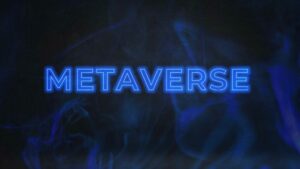MongoDB has improved its support for ACID transactions in recent versions, but it is important to note that its transactional capabilities are not as mature as those of PostgreSQL. For applications heavily reliant on complex transactions, PostgreSQL may be a more suitable choice. It popularizes document model, provides built-in scaling and high availability, offers an integral developer experience, and is driven by a sharp-minded for-profit business entity.

It also creates a new revision ID for the document, which allows multiple documents with the same data to exist simultaneously. PostgreSQL uses an SQL variant, called Postgres SQL, as its query language. Although similar to SQL, it has additional features like an extensible type system, functions, and inheritance. difference between postgresql and mongodb However, PostgreSQL is still compatible with standard SQL, so you can use SQL queries as well. Furthermore, MongoDB Atlas is not only the only globally distributed, multi-cloud database but also a complete data platform, which makes spinning up a database cluster and back end-as-a-service easy and fast.
MongoDB vs PostgreSQL: 15 Critical Differences
Depending on the user application, either option can be utilized to work on. Both MongoDB and PostgreSQL have their own set of features and challenges. Ultimately, the decision comes down to the business use case you are working with and its needs. Finding the right database largely comes down to the needs of your system and organization. If scaling is a chief requirement, then a database like MongoDB is a good option.

Keep in mind, however, that PostgreSQL’s security will vary depending on the cloud platform. Since you can deploy on multiple platforms, cloud providers employ different security protocols and configurations, potentially impacting PostgreSQL security. Security is always a big talking point for databases – and that’s no different when deciding between MongoDB and PostgreSQL. For instance, PostgreSQL boasts of a secure architecture with strict rules governing the structure of databases – ideal for businesses with complex and sensitive systems such as banking, analytics, etc. On the other hand, while MongoDB does support ACID transactions, it’s not entirely ACID-compliant by default.
Community and Support
PostgreSQL offers tons of authentication methods including a pluggable authentication module (PAM) and lightweight directory access protocol (LDAP), which reduce the attack surface of the servers. It also ensures server-level protection through host-based authentication and certificate authentication. The tight rules governing the structure of the database allow PostgreSQL to be a very secure database, hence it can be reliable to be used for banking systems. Developers can choose what’s essential in the application and make the changes required. MongoDB uses MQL, which can be used to work with documents in MongoDB and take out data while delivering the flexibility and power that SQL does. It can be difficult to adjust the structure of the database once it’s loaded.
Karnataka Bank Recruitment 2023: New Notification Out, Check … – StudyCafe
Karnataka Bank Recruitment 2023: New Notification Out, Check ….
Posted: Wed, 25 Oct 2023 05:43:39 GMT [source]
MongoDB is a popular NoSQL database that many companies have adopted due to its flexibility and scalability. MongoDB is a document-oriented database that provides high performance, high availability, and automatic scaling. Yetunde Salami is a seasoned technical writer with expertise in the hosting industry.
Community and Ecosystem:
MongoDB rolled out support for multi-document ACID transactions with version 4.0. In May 2020, a bug was reported that affected the ACID claims of MongoDB. PostgreSQL, on the other hand, uses the GROUP_BY to process and run queries. A Foreign Key is a column or a group of columns of one table that references another column (generally the primary key) of another table and establishes a relationship between them. MongoDB does not support Foreign Keys whereas PostgreSQL does support them.
- I haven’t used Dremio, but there are als a few easy ways to deploy it on AWS, Azure or on premises.
- We are going to cover their key features, functionality, performance, and their use cases.
- This solution is obviously better than EAV modeling but it feels
wrong to me for the same reason #3 felt wrong – they both feel like
using your hammer as a screwdriver too. - MySQL, similar to PostgreSQL, has a tablespaces feature (part of InnoDB engine) that can help DBAs group and store physical objects (Tables, Indexes, etc.), and this can help distribute I/O.
Expression Indexing, Partial Indexing, Bitmap Indexing, and Full-Text Indexing can help improve query performance on larger-size Tables, which in turn can improve query performance significantly. In PostgreSQL, table partitions and Indexes can be placed in separate tablespaces on different disk file systems, which can greatly improve table scalability as well. PostgreSQL is an easy-to-use database with its full stack of RDBMS database features and capabilities that can handle structured and unstructured data. Installations can be easily done on Linux-flavored environments using yum or source code from the PostgreSQL website. Installing from source code gives you much more fine-grained control over the installation.
Method 1 aka The Hard Way: Manual ETL Process to Set Up MongoDB to PostgreSQL Integration
JSON data can also be Indexed with B-Tree and GIN for improved searches, and XML and HSTORE data types can handle XML formats and other complex text-format data as well. With the support for spatial data types, PostgreSQL is no doubt a complete multi-model database. What makes PostgreSQL stand out is its support for a wider range of data types, such as ARRAYs, NETWORK types, and Geometric data types (including advanced spatial data functions) to store and process spatial data.

Unlike most traditional databases using SQL, MongoDB uses a different syntax and structure, which is relatively easy to learn, even for non-programmers. NoSQL databases like MongoDB are well suited for managing semi-structured or unstructured data. You can easily add new fields or data types without explicitly declaring the document’s structure, making it more flexible for users to view the data, edit it, or update the schema as much as they want.
COMMUNITY
Businesses around the world are using PostgreSQL for mission critical workloads. The PostgreSQL community and a few companies such as EnterpriseDB and 2ndQuadrant are making sure that PostgreSQL adoption continues to expand on a global level. Stored Procedures are implemented in the form of functions in PostgreSQL with a RETURN VOID clause. The part of this feature that developers love is the support it has for various languages that are not supported by MySQL, such as Ruby, Perl (PlPerl), Python (PlPython), TCL, Pl/PgSQL, SQL, and JavaScript. Both MySQL and PostgreSQL have replication and clustering capabilities and can ensure data operations are distributed horizontally.

It is programmed in C and follows a monolithic architecture, which means that the components are completely united and work systematically. It offers community support along with additional support to some of its paid customers. It is widely used in the healthcare, banking, and manufacturing industries due to its innovative backup mechanisms.
Use Cases of 2 of the Most Popular DBs
MongoDB has seen massive adoption and is the most popular modern database, and based on a Stackoverflow developer survey, the database developers most want to use. Thanks to the efforts of MongoDB engineering and the community, we have built out a complete platform to serve the needs of developers. MongoDB is based on a distributed architecture that allows users to scale out across many instances, and is proven to power huge applications, whether measured by users or data sizes. The scale-out strategy relies on using a larger number of smaller and usually inexpensive machines. MySQL is definitely not the best choice for RDBMS or ORDBMS applications. Since Oracle’s acquisition of MySQL, adoption of MySQL has significantly declined, and development progress in the open-source space has taken a hit as well, inviting criticism from MySQL users.

Comments are closed.